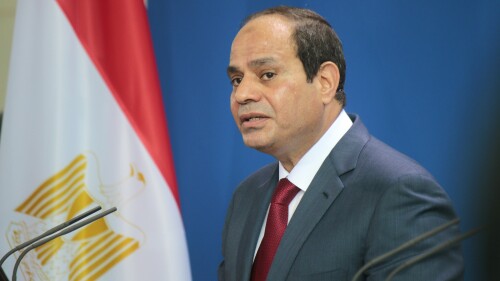When Palestinians revealed their true colors electing Hamas to 74 seats in the Palestinian Legislative Council, the Arab world was dumb-struck. An Islamist terror group had finally snatched power from the ruling old guard and woke up the world to a new Middle East reality. But does Hamas’ victory really represent the decisive shift where Palestinian politics began going down-hill?
Historians and students of current affairs often compare the Israeli-Palestinian conflict to that between Northern Ireland and the Irish Republican Army (IRA), in which an organization claiming to represent Catholics took up arms against Irish Protestants and the British. For decades, the IRA’s modus operandi was slaying thousands of innocent men, women and children. It also utilized terror tactics such as human bombs, which involved chaining one of its unfortunate victims to the steering wheel of a lorry laden with explosives, which was then exploded. The IRA was Western Europe’s most successful terror organization and has spread its malign tentacles across the globe. The parallels with Hamas are inescapable.
Since the IRA has disarmed, the IRA’s days of major violence are behind, but certain comparisons are still instructive. Even when the IRA agreed to a cease-fire or a hudna they not only continued to plan but also implemented attacks. Splinter groups such as the ‘Real IRA’ continue to threaten and undertake smaller scale operations, although it is unclear whether these are in fact rogue operations or in fact sanctioned by the IRA itself. And most importantly, throughout the many years of negotiations, the IRA continually threatened to return to violence if its conditions were not met. So are Hamas and the IRA similar in their actions and practices? Can the IRA case help us predict Hamas’ actions?
The IRA’s willingness to accept a cease-fire was recognized as well received; however, the IRA’s possession of illegal weapons quickly generated friction and tension that took years to overcome. Terrorist expert Ely Karmon explains the IRA’s enduring attachment to arms and their difficulty with disarmament:
“No paramilitary organization - even those which ostensibly support the Belfast Agreement - is prepared to surrender its weapons. The Irish Times reports that hundreds of tons of weapons are said to be cached all over Ireland, ‘from bunkers in the midlands and southwest of Ireland to concrete-lined holes under kitchens in houses across Northern Ireland.’”[1]
So based on the IRA model are we to expect Hamas to reform and democratize? Ironically before the elections it was the Fatah-controlled Palestinian Authority that continually refused to disarm Hamas. Now Hamas will become the Palestinian Authority. Having fought, literally, to keep its weapons for many years, the chances of Hamas voluntarily disarming are tiny, particularly since their ideology calls for continuing warfare against Israel and Jews.
All these contrasts come back to the one major difference between the IRA and Hamas -- religion. For the Irish, religion is not rooted in all facets of life as it is in with Israelis and Palestinians. Religion in Northern Ireland is understood as a cultural and historical force, while in the Middle East it ties Israelis and Palestinians to the same land. Furthermore, Hamas being a religious organization claims religious justifications for attempting to wipe out Israel. This factor is what differentiates the two groups and will ultimately prove how futile Hamas’ reform efforts are.
There is a domestic side to Hamas’ victory. Hamas popularity did not increase because of Abbas’ weakness; it actually began even before Oslo as a political counter force to Arafat’s PLO. And as Arafat’s corruption grew, the support for Hamas within Palestinian society became stronger.
One of Hamas’ biggest achievements is demonstrating its agility to differentiate between the short-term objective of a Palestinian State within the West Bank and Gaza and the long term objective of creating an Islamist State on the land of Palestine that would eliminate Israel. Maintaining this balance is what allowed Hamas to survive. But regardless of tactics, eliminating Israel is fundamental to Hamas’ theology. For its part the IRA wanted England out of Ireland, not England out of England.
During the “Oslo - years of hope,” while Arafat and the PLO were signing agreements with the “Zionist entity,” Hamas was focusing on blowing up Israelis and the peace process. And while Arafat and his cronies were living the good life on the backs of Palestinian society it was Hamas’ schools and medical facilities that served the masses. Arafat knew he couldn’t avoid the growing support for Hamas; thus, he paid them off as well as giving them his blessing for attacking Israel. As then Israeli Chief of Staff Lt.-Gen. Amnon Lipkin-Shahak told Israel Radio on March 23, 1997, “organizations such as Hamas and Islamic Jihad have an understanding from the Palestinian Authority to carry out attacks.” Furthermore, in his early days in Egypt, Arafat was associated with the Muslim Brotherhood so it was not a stretch for this seemingly secular revolutionary to lend a hand to Hamas.
The Palestinian Authority’s lack of control over extremists during Fatah’s rule proved abortive and now under Hamas’ leadership there is no doubt that Israelis require an unabated need for more security. The only positive outcome of these elections is now when the PA attacks Israelis there can be no hiding behind the canard of “extremists” who cannot be controlled. Furthermore, when the IRA bid farewell to its arms it was welcomed with open arms into the EU which translated into economical incentives. Palestinians, however, value their ideology of hate much more than they do such incentives, and they will not give it up no matter what the cost.
Notes:
[1] http://www.ict.org.il/articles/articledet.cfm?articleid=73







